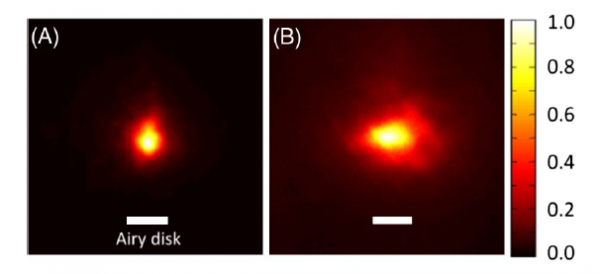Visual acuity in two-photon infrared vision
Optica 2017 | 4 (12) | 1488-1491
Pablo Artal, Silvestre Manzanera, Katarzyna Komar, Adrian Gambin-Regadera,, Maciej Wojtkowski
Abstract:
Humans can detect infrared light at wavelengths over 1000 nm, perceived as visible light of the corresponding half wavelength. This is due to a two-photon (2P) absorption process, which requires sufficiently large amounts of luminous energy. For safety reasons, this energy must be delivered by pulsed light sources well focused in the retina. Although this effect has been known for several decades, the spatial properties of 2P vision in comparison to normal vision have not yet elucidated. We have developed a new experimental system to measure, for the first time, to the best of our knowledge, visual acuity mediated by 2P absorption and compare it against that with visible light. The spatial resolution of 2P infrared vision is the same as in normal visible light. However, the use of 2P infrared vision may have some future potential applications, for example, in permitting vision in those cases with opaque optical media to visible wavelengths while keeping some transparency in the infrared.



